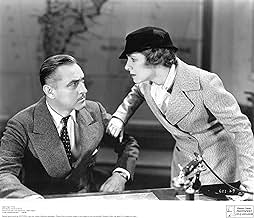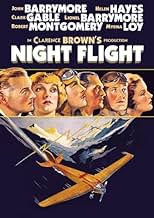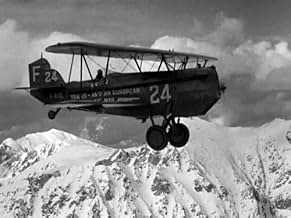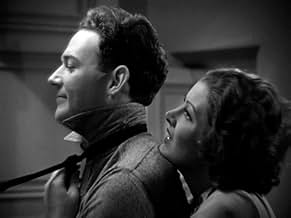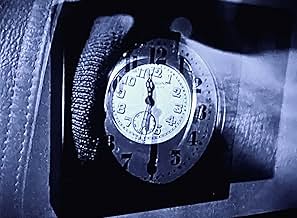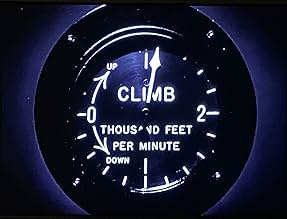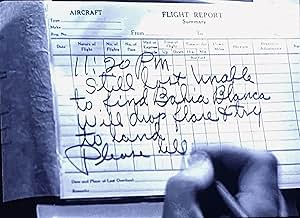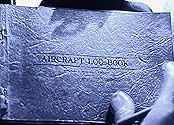अपनी भाषा में प्लॉट जोड़ेंPolio breaks out in Rio de Janeiro, the serum is in Santiago and there's only one way to get the medicine where it's desperately needed: flown in by daring pilots who risk the treacherous we... सभी पढ़ेंPolio breaks out in Rio de Janeiro, the serum is in Santiago and there's only one way to get the medicine where it's desperately needed: flown in by daring pilots who risk the treacherous weather and forbidding peaks of the Andes.Polio breaks out in Rio de Janeiro, the serum is in Santiago and there's only one way to get the medicine where it's desperately needed: flown in by daring pilots who risk the treacherous weather and forbidding peaks of the Andes.
- निर्देशक
- लेखक
- स्टार
- पुरस्कार
- कुल 4 जीत
- Nightclub Manager
- (बिना क्रेडिट के)
फ़ीचर्ड समीक्षाएं
Helen Hayes, whose most famous film role as Madelon Claudet is no doubt destined to be ignominiously dumped onto DVD-R via the Warner Archive, has lots of screen time here as the wife of a pilot (Jules - played by Clark Gable) who is waiting on her husband to return from his first night flight for a late night celebration supper. As his arrival is delayed more and more throughout the night, so grows her panic.
The oddest thing here is the misuse - or should I say lack of use - of Clark Gable. Throughout the film he is stuck in a plane, mute and motionless. Except for a few log entries that he makes and some of his facial expressions we are really denied a performance here or for that matter, an idea of what is going through his mind.
I'd say it's worthwhile just because it's such an odd departure from what MGM generally did in the 1930's plus it's been locked in the vaults for 75 years due to rights problems. It's interesting to see how Warner Home Video has taken almost a film school approach to what they put out on DVD in the last couple of years. Practically all of their documentaries on film history wind up on pressed DVD, but some pretty entertaining precodes, noirs, and even more modern films such as "Don't Be Afraid of the Dark" wind up in the Warner Archive on DVD-R, a medium that doesn't usually have a life span greater than a couple of years.
The story concerns mail flights at night, an innovative thing at that time. Both the Barrymore men are quite robust here and delivered strong acting. John is the tough, hard-nosed head of the service, and Lionel (sans wheelchair which his arthritis would send him to later on) plays an assistant. I would have rather seen them together in something else, though they were both very good.
In the beginning, we're shown a little boy in South America with infantile paralysis waiting for a serum that will be rushed to the doctor from Chile via the new night mail service.
There's not a tremendous amount of dialogue in "Night Flight," but there is a lot of very powerful music by Herbert Stothart and some magnificent footage of planes going through the clouds. It's very atmospheric. What dialogue there is today seems very melodramatic but is handled well by John Barrymore and Helen Hayes. Hayes in the film is married to a pilot played by Clark Gable. Gable is very handsome with such a warm smile, and he shows his character's real love of flying. Montgomery plays a playboy pilot who likes a good time as well as flying.
It's amazing how with a film so old, with those archaic planes, how one can get drawn into a story, yet somehow I did. I had a few problems - first of all, I couldn't figure out the countries and the different plane connections. It seemed like the service originated in France - I kind of had to let that go.
During a storm, Gable sends down flares that ride on little parachutes - it was early days for special effects. These looked a little cartoonish but were interesting nonetheless as they floated down to the water.
Some people don't care for Clarence Brown, but I think he was able to really set a mood in his films, this and The Rains Came being good examples.
"Night Flight" is one reason why I love classic films. We've come so far in aviation; eighty-plus years ago, it was unheard of to fly at night. And when you look at the planes, it's a wonder they got off the ground day or night. Maybe it was my mood or the Stothart music, but it was something to think about.
It's not too surprising that this story was taken from a novel by Antoine de Saint-Exupéry--the author of "The Little Prince". While "The Little Prince" seemingly has nothing to do with this film, it has a common thread--air travel, as there is a pilot who lands on the Prince's little planet. And, incidentally, the author was a pilot--and this would seem to explain his fascination with planes in these and other stories.
By the way, in the film you hear the term 'infantile paralysis'. This was another term for polio if you were wondering.
What may seem conventional today, these elements were new in 1933. The use of silence - a ticking clock at a dramatic moment. A wonderful score, exceptional photography in the air and on the ground. The texture of rich background characters and extras. Exceptional editing! Death in the air is made so beautiful, romantic and horrifying all at the same time!
It's easy to laugh, but these were the days pilots were ALLOWED to bring alcohol along in the cockpit! This was little understood risky and dangerous work. And not only shown from one perspective. Each character has his own.
Reviews at the time noted all I've said and the public appreciated this and ate it up!
So if you can rise above your modern day aesthetics, I think you'll discover and amazing 1930s film! You know, they ain't making them anymore!
The film is strangely like a series of monologues or at best two shots. All of the characters and the drama are supposed to be tied together by John Barrymore, the hard driving managing director of the Trans Andean European AirMail. The original novel was based on St. Expury's experiences as a flyer, and later, a manager, with Aeropostale, the pioneering French Air Mail line later merged into Air France. Using Buenos Aries as a center, Aeropostale developed South American airoutes south to Patagonia, to the oil fields near Tierra del Fuego. The chief of station and one of Aeropostale's founders, Didier Daurat, (Riviere in the film) became legendary for his single minded drive to get the mail through, an early example of existential ethics. Another route was forged north across the River Plate and Uruguay to and through Paraguay to Bolivia and another, most spectacularly, across the Andes to Santiago, Chile.
Heros were produced which electrified France and the world. Mermoz pioneered the Dakar - Natal route across the South Atlantic as well as the Buenos Aries to Natal route. Henri Guillaumet flew across the Andes 396 times. The Andes were too high to be overflown even by the latest improved models used by Aeropostale and pilots had to fly their way around and through the mountains rather than over them, something which is shown in the film. For enthusiasts of vintage aviation the film is priceless with maybe three quarters of the flying done for real. John Barrymore unfortunately has begun his decline by the time this film was made and does his `eyebrow' thing to excess, signalling that he was either unhappy with his role or his domestic arrangements or both. Gable, just beginning his reign as the King of Hollywood, is almost unrecognizable in his pilot's outfit. Robert Montgomery manages to have scenes with the most co-stars in the picture, except for maybe John Barrymore. Helen Hayes is effective as the wife as far as that goes. Myrna Loy has a role usually described as `thankless'. Produced by David Selznick, it never appeared on his extensive resume and now can be seen as a very atypical Selznick project, beyond the accumulation of the talent. Undoubtedly the literary inclined Selznick was attracted to the book's having won the prestigious Prix Femina in 1931, though he was more sympathetic to period pieces (Dickens, GWTW) then contemporary drama. Perhaps he had been thinking of his associate at RKO (King Kong) , Air Corps pilot and airline executive Merian C. Cooper. Clarence Brown, who directed Garbo, was one of MGM's most romantic directors, always setting an atmosphere where love either triumphed or ended tragically. One wonders what would have happened if a more consciously `machine age' director like William Wellman or Howard Hawks had shaped the material.
The worst that might be said about NIGHT FLIGHT is to lament what might have been. Narrative techniques common today (and, ironically, during the silent era) would have rendered a more interesting film, though not one suitable for audiences of the time. In other words, a disappointment but not a terrible film by any means. The real curiosity is why it's never revived on Turner Classics which presumably owns both a print and the rights. I suspect that there may be a question as to the underlying rights to St. Expury's Vol de Nuit that might be responsible.
क्या आपको पता है
- ट्रिवियाIt was originally planned to show Clark Gable's character parachuting from his abandoned plane at an altitude of 25,000 feet. However, stuntman Ivan Unger, who was doubling for Gable, passed out at 20,000 feet due to lack of oxygen and the shot was never captured.
- गूफ़At about the 10-minute mark, the shadow of the Patagonia biplane (the one piloted by J. Fabian, played by Clark Gable) is shown over various parts of the pasture-lands of Argentina. The shadows cast over the horse and herd of cattle below are that of a biplane, but the shadow going over the flock of sheep is clearly that of a monoplane, not a biplane.
- भाव
Wife of Brazilian Pilot: What's it all for? Just so somebody in Paris can get a postcard on Tuesday instead of Thursday?
- क्रेज़ी क्रेडिटDuring opening credits, the film title is done as "sky writing" by an airplane, and the plane is just finishing the last "T" on "flight".
- कनेक्शनFeatured in Maltin on Movies: Super 8 (2011)
टॉप पसंद
विवरण
- चलने की अवधि1 घंटा 24 मिनट
- रंग
- पक्ष अनुपात
- 1.37 : 1
इस पेज में योगदान दें


